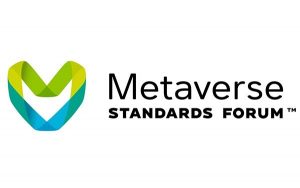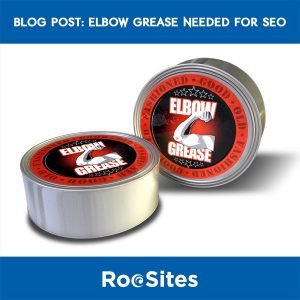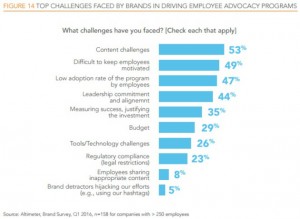The purpose of this article is to serve as the definitive basic guide to, and overview of, digital marketing tools for small and medium businesses in 2015. Consider digital marketing explained!
Some may be surprised to learn that the term “digital marketing” has been around since the 1990’s – many small and medium business owners are just now learning more about it, as it gains more momentum in the contemporary marketing environment.
Simply defined, digital marketing is a discipline of marketing which focuses on the use of technology to: reach an audience, sell a product or service, grow the awareness of a business or a brand, communicate effectively with customers, and bring more customers to a business.
The concept of digital marketing has evolved significantly over the years, and continues to evolve. As technology changes and advances, so does digital marketing – with new ways to reach customers becoming available every day. Online, or internet, marketing is a major component of digital marketing – the terms are often erroneously used interchangeably.
The following practices comprise digital marketing, as it exists today – with a brief description of how each applies to the small and medium business owner. In this article we will cover: websites, display advertising, social media, email marketing, search engine optimization, reputation management, search engine marketing, retargeting, lead generation, inbound marketing, outbound marketing, content marketing and marketing automation.
What Constitutes a Good Business Website And Does My Business Need It?
Websites are nothing new – they are workhorse of any small or medium business owner and have been for decades. A website should serve as a business’ central hub, to where all other marketing efforts lead a potential customer.
The main advantage of having your own business website, using an open source content management system (CMS) like WordPress or Drupal, is that you will always have full control over how your website looks and what information is on it.
When a business depends on customers being able to find it, a business owner cannot afford to have a website hosted by a service which can change or disappear at any time. Like your business, if properly “watered”, your website will grow and bring more customers to your doorstep over time.
A well-designed website is not only the face of a business but also a way for people looking for your product or service, or even products and services like yours to find you. Making sure your website is designed with your audience in mind is imperative to making a good impression on a potential customer and can make or break a sale.
The cost of having and maintaining your own business website is generally low compared to most other marketing initiatives. With a user-friendly CMS like WordPress and Drupal, and a few hours per month, technically managing your own website has never been easier. Unless your business requires advanced features, hiring someone to set it up for you and show you the ropes is enough to last you for a long time.
There is simply no reason to not have at least a basic, mobile-friendly, fast, responsive website for your business.
37% of consumers are more likely to purchase on a mobile-optimized site. (ExactTarget, 2014 Mobile Behavior Report)
Having a website opens up many new possibilities for creative ways of reaching your customer online. One such possibility is: you can easily set up landing pages, which will serve as the first thing a potential customer sees when they visit your website, with special offers and interesting information which a potential customer may find useful. Another possibility is hosting a blog, which is – for many businesses – an undervalued marketing tool. You might have a writer in you dying to come out, and there is no better place to blog about topics which interest your potential customer than on your business website.
Examples of the types of clients which often see success with this digital marketing tool: every type of business can benefit from having an attractive, informative, fast, responsive, mobile-friendly, easy-to-navigate website
What is Display Advertising?
Another “old school” tool for online advertising that’s been around for a long time, display ads generally involve the placement of an image ad on another website or network of websites. If you have a visually stunning consumer product, display ads can serve as a good tool to drive traffic to your website or landing page.
Many small businesses rely on display advertising to drive traffic to the website or landing page – these are often effective with an offer, such as a discount or promotion.
There are now newer iterations of “display advertising” available, such as the placement of sponsored articles in relevant places on news websites or other websites relevant to your industry.
Examples of the types of clients which often see success with this digital marketing tool: car dealerships, travel agencies, retail, banking, tourist destinations, attorneys, realtors, home improvement, entertainment
What is Social Media Marketing?
Social media marketing is the utilization of various social networks to promote your business. Different types of businesses see success on different social networks.
Retail and travel businesses often see success via visual ads – amazing product or destination imagery which draws in potential customers through aesthetic appeal. For such an approach: Instagram, Pinterest or Facebook may be a good avenue.
Businesses focused on business to business products and services often see success on LinkedIn.
Over time, social media marketing is evolving from an organic, content-based approach to more of a PPC approach, where your main focus is on creating ads and targeting them to hit your audience. Organic reach continues to decrease across the board, as social networks battle for revenue.
The number of businesses that say Facebook is critical or important to their business has increased by 75%. (State of Inbound Marketing)
Examples of the types of clients which often see success with this digital marketing tool: entertainment, pet services, recreational, grocery chains, attorneys, restaurants, health & beauty, HVAC
What is Email Marketing?
Email marketing is another long-standing staple of digital marketing and, when done the right way, can be an amazing tool for your small business.
In 2014, email marketing was cited as the most effective digital marketing channel for customer retention in the United States. (eMarketer)
There are two approaches to email marketing:
The first approach is to utilize email marketing as an integral component of a well-rounded inbound marketing approach. In this approach, the focus is on building opt-in – also called permission – email lists by using original interesting content on the website or landing page to entice potential customers to sign up to receive more content like this in the future. Businesses which build their own email lists tend to see open rates and click-through-rates much higher than those who “rent” or purchase email lists. However, this process involves quite a bit of work, so many businesses choose to outsource their list building to companies with a significant amount of resources dedicated to this, such as a digital marketing agency.
The second option is to work with an agency and use the agency’s email lists or email vendor resources to reach out to a significant list of potential customers in their area. This approach tends to require much less effort from the business owner, but also may not provide results as significant as those seen through organic email list growth.
Email marketing can be content based or promotion based, or a mix of both. Which you choose will depend on multiple variables, one of which is the type of business you have, another is your marketing goals.
Examples of the types of clients which often see success with this digital marketing tool: almost every type of business can benefit from email marketing
What is Search Engine Optimization (SEO)?
Search Engine Optimization is a mix of techniques used best in conjunction with your own business website, as opposed to a webpage hosted for your business by a service like Wix or one of many others like it. The purpose of SEO is to get your business website to appear when people search for certain keywords on search engines, putting your service or product in front of them organically.
50% of all mobile searches are conducted in hopes of finding local results, and 61% of those searches result in a purchase. (Search Engine Watch)
There are two types of SEO – onsite and offsite.
Onsite SEO focuses on using keywords, internal links, creating original content, and structuring your website in specific ways to help search engines identify the content your website offers and serve it up to people searching for such content.
Offsite SEO focuses on building the strength of your website by doing things outside of your website. A common way to build off-site SEO is to provide content creators of respected websites with links to research you’ve conducted, so when they publish content you get traffic back to your site and build link strength.
Examples of the types of clients which often see success with this digital marketing tool: any client with their own hosted website
What is Reputation Management?
Reputation management is an activity which involves the tracking of online reviews of your business and your business listings on the internet. It’s defined as “the influencing and/or control of an individual’s or business’s reputation.” Even back in 2010 an article in the Guardian suggested that, in the future, millions will employ reputation managers — well, that future is now.
Many businesses, especially smaller businesses or ones with an unknown brand name, can be made or broken by reviews. With reviews now on Facebook, Yelp, Google, and a plethora of other popular websites, businesses often rely on professionals to alert them when a bad review pops up, or when they want to make sure their listing appears correctly in various directories so potential customers can find them quickly.
Examples of the types of clients which often see success with this digital marketing tool: every client
What is Search Engine Marketing (SEM)?
Search Engine Marketing is a marketing tool which allows advertisers to appear higher in search rankings. As opposed to Search Engine Optimization (SEO), SEM relies on paid advertisements, rather than organic reach, to push a link to the top of the search results.
SEM is a numbers game, and it can be a difficult one to play for many business owners. A main component of SEM is pay-per-click (PPC) advertising, which is usually done on search engines like Google, Bing and Yahoo, where an advertiser bids on keywords to appear higher in search results and then pays for each click.
Due to the numerous technical challenges, SEM can be a time-consuming activity and if done incorrectly can be a major drain of time and resources.
Examples of the types of clients which often see success with this digital marketing tool: clients which offer promotions or offers often benefit from this product
What is Retargeting?
Retargeting is a form of display advertising which kicks in when a person visits your website through an SEM campaign, or other means. A piece of code is then stored on their device which then ques up display ads for your business across a network of other websites, making a potential customer more likely to come back and complete an action or purchase on your website.
Examples of the types of clients which often see success with this digital marketing tool: clients with a website and/or running an SEM campaign
What is Lead Generation?
Lead generation is a marketing approach primarily used in business to business marketing but sometimes in consumer marketing initiatives. Simply explained, this approach focuses on identifying candidates who are most likely to make a purchasing decision and reaching out to them through various marketing channels and offers.
A business focused on lead generation techniques may use a mix of inbound and outbound marketing strategies to generate leads.
71% of B2B marketers use content marketing to generate leads. (MarketingProfs)
A lead generation marketing approach often focuses heavily on the use of excellent landing pages, great conversion forms and awesome calls-to-action to generate interest in a product or service.
Examples of the types of clients which often see success with this digital marketing tool: mainly b2b clients, but consumer clients with high ticket items often benefit from lead generation.
What is Inbound Marketing?
Inbound marketing is a form of marketing focused on building a lead or customer base by providing interesting, relevant information, at the right place at the right time. This is a “softer” approach than Outbound Marketing, and generally relies heavily on blogging and content, as well as webinars and other educational tools to reach the desired audience.
Examples of the types of clients which often see success with this digital marketing tool: any client can benefit from effective inbound marketing
What is Outbound Marketing?
Outbound marketing is the exact opposite of inbound, where the tactics often involve “yelling” at potential customers to get them to check out your offer. Outbound practices can include cold emails, cold calls, display advertising, SEM. Typically, outbound marketing is a viable strategy when your business is looking for a quick win – getting a really nice offer out there for a large chunk of people to see quickly.
Some forms of outbound marketing, such as cold or spam emailing, are largely frowned upon and can really damage your business’ credibility. When taking an outbound approach, be absolutely 100% sure that the content or offer you’re promoting is interesting to your audience and very well targeted.
Examples of the types of clients which often see success with this digital marketing tool: temporary or seasonal businesses tend to do well with outbound efforts, as they often do not have the time to build an effective inbound campaign
What is Content Marketing?
Content marketing is a discipline of marketing, most often used within the inbound marketing framework, which relies heavily on creating and disseminating original content, such as articles, tips, videos, images, webinars, podcasts, and other assets which a potential customer may find interesting.
Content marketing generates 3 times as many leads as traditional outbound marketing, but costs 62% less. (Demand Metric)
Blogging is, perhaps, the most common form of content marketing. Businesses owners who generate interesting, relevant content on their blogs are often able to engage their website visitors, create opportunities for more traffic to their website via social sharing and do onsite-SEO with just one simple tool.
Examples of the types of clients which often see success with this digital marketing tool: clients who have the resources to dedicate to quality original content creation – often those implementing an inbound marketing strategy
What is Marketing Automation?
Much as the term implies, marketing automation is a system to nurture leads and turn them into customers through a pre-determined set of processes. HubSpot describes marketing automation at its best as: “” but warns that “companies that implement complicated automation programs without a reliable source of organic leads find that their investment has little impact on revenue.”
Even though marketing automation is a tool which many business owners struggle to understand the ROI of, or implement effectively, many businesses large and small benefit from its use — however, this tool likely requires additional education to manage effectively and can often take up significant time. If poorly managed, marketing automation will: at best, be ineffective — and at the worst, can actually hurt your brand.
Examples of the types of clients which often see success with this digital marketing tool: most businesses large and small can benefit from properly managed marketing automation
The Takeaway
While your business certainly doesn’t need to use all of these tools to succeed, to run a business today without implementing at least some form of digital marketing, or using some sort of digital marketing tool, is to be losing customers to your competitors. This statistic speaks volumes:
“Two-thirds of consumers say it is somewhat or very important that companies they interact with are seen as a technology leader.” (2014 Mobile Behavior Report)
Now is the time of rapid evolution in the small business marketing space. Digital marketing is not a fad – mobile phones and the internet will not go away anytime soon. Just managing the day-to-day of a business and providing great customer service is often no longer enough to succeed in the contemporary consumer environment. Customers expect more than ever from businesses. Having an effective digital marketing strategy is essential to the success of your business, in the long run. The good news is: now is the best time to jump in with both feet and take your business to the next level with a mix of any, or all, of the above-mentioned tools.
This article originally appeared on SmartReach Digital.
(475)
Report Post





